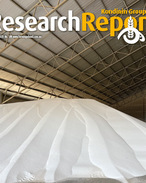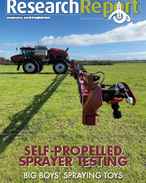This article is 7 years old. Images might not display.
However according to Weed Smart, the heavy reliance on herbicides in no-till systems has also created a significant shift toward weeds that can thrive in this farming system.
Weeds that were previously not considered a problem are now making farming unprofitable or impossible on some no-till paddocks.
University of Queensland senior research fellow, Dr Yash Dang said the removal of cultivation has also led to an accumulation of certain immobile nutrients such as phosphorus, zinc and potassium in the dry surface layer of the soil where plant roots cannot access them.
"Cultivation has a role in distributing nutrients, managing soil and stubble borne diseases and controlling certain weeds," Dr Dang said.
"The complete removal of tillage for 15 to 20 years or more on some farms has led some farmers to the conclusion that they cannot continue as no-till farmers," he said.
In 2012 Dr Dang undertook a four year project to investigate the effect of tillage on a range of soil properties in no-till paddocks from Emerald in Queensland to Dubbo in New South Wales.
Dang applied tillage using disc and tyne implements and also tested the timing and frequency of tillage operations.
"On well-structured soils there was no detrimental effect as a result of the cultivation, even on more difficult soils, such as those with sodic subsoil or with hardsetting tendencies, one-off tillage operation at the correct soil moisture content caused only limited damage to the soil and repair was evident within two or three years," Dang said.
The research also demonstrated that cultivation is a viable weed control tactic within an otherwise no-till system, to prevent seed set of weeds such as fleabane and feathertop Rhodes grass, which flourish in a chemical-dominant control program.
"The positive effect on weed numbers is usually short-lived and has the potential to have negative effects in the years after cultivation," he said.
"Growers considering the re-introduction of occasional cultivation must consider all the pros and cons. Cultivation is just another tool in an integrated weed management system - not a stand-alone solution."























